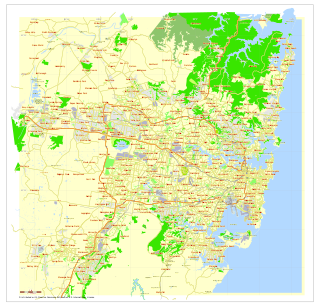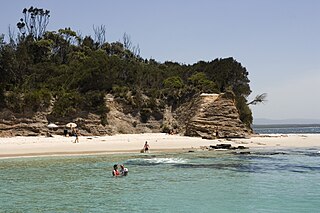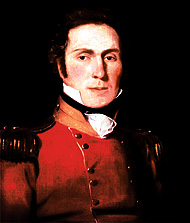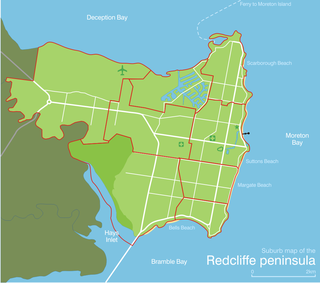John Finnegan, a convict of the colony of New South Wales (now Australia), was one of four men who set off on a timber getting mission from Sydney bound for Illawarra in 1823. [1] The men were caught in a severe storm and driven north 728 km [2] to Moreton Island off the coast of Brisbane, becoming the first Europeans to live in the area and the first to discover the Brisbane River.

New South Wales is a state on the east coast of Australia. It borders Queensland to the north, Victoria to the south, and South Australia to the west. Its coast borders the Tasman Sea to the east. The Australian Capital Territory is an enclave within the state. New South Wales' state capital is Sydney, which is also Australia's most populous city. In September 2018, the population of New South Wales was over 8 million, making it Australia's most populous state. Just under two-thirds of the state's population, 5.1 million, live in the Greater Sydney area. Inhabitants of New South Wales are referred to as New South Welshmen.

Australia, officially the Commonwealth of Australia, is a sovereign country comprising the mainland of the Australian continent, the island of Tasmania and numerous smaller islands. It is the largest country in Oceania and the world's sixth-largest country by total area. The neighbouring countries are Papua New Guinea, Indonesia and East Timor to the north; the Solomon Islands and Vanuatu to the north-east; and New Zealand to the south-east. The population of 25 million is highly urbanised and heavily concentrated on the eastern seaboard. Australia's capital is Canberra, and its largest city is Sydney. The country's other major metropolitan areas are Melbourne, Brisbane, Perth and Adelaide.

Sydney is the state capital of New South Wales and the most populous city in Australia and Oceania. Located on Australia's east coast, the metropolis surrounds Port Jackson and extends about 70 km (43.5 mi) on its periphery towards the Blue Mountains to the west, Hawkesbury to the north, the Royal National Park to the south and Macarthur to the south-west. Sydney is made up of 658 suburbs, 40 local government areas and 15 contiguous regions. Residents of the city are known as "Sydneysiders". As of June 2017, Sydney's estimated metropolitan population was 5,230,330 and is home to approximately 65% of the state's population.
Contents
Prior to this a number of earlier explorers had sailed the Moreton Bay area. Most notable was Matthew Flinders who spent 15 days in the general vicinity during his 1799 expedition from Port Jackson to Hervey Bay. Due to the difficulty of finding coastal rivers by seaward exploration, none of these explorers became aware of the existence of the Brisbane River. [3] Later in 1823, when the Surveyor General, John Oxley, was commissioned by Governor Brisbane to find sites for further penal settlements, he made a trip to the Moreton Bay area. If not for a chance meeting with one of Finnegan’s surviving partners, Thomas Pamphlett, and the men telling him of a large freshwater river they had stumbled across some months earlier, Oxley may never have made the exploration that led to the establishment of Brisbane Town some years later.

The Moreton Bay is a bay located on the eastern coast of Australia 14 kilometres (8.7 mi) from central Brisbane, Queensland. It is one of Queensland's most important coastal resources. The waters of Moreton Bay are a popular destination for recreational anglers and are used by commercial operators who provide seafood to market.

Captain Matthew Flinders was an English navigator and cartographer who led the first circumnavigation of Australia and identified it as a continent.

Port Jackson, consisting of the waters of Sydney Harbour, Middle Harbour, North Harbour and the Lane Cove and Parramatta Rivers, is the ria or natural harbour of Sydney, New South Wales, Australia. The harbour is an inlet of the Tasman Sea. It is the location of the Sydney Opera House and Sydney Harbour Bridge. The location of the first European settlement and colony on the Australian mainland, Port Jackson has continued to play a key role in the history and development of Sydney.














